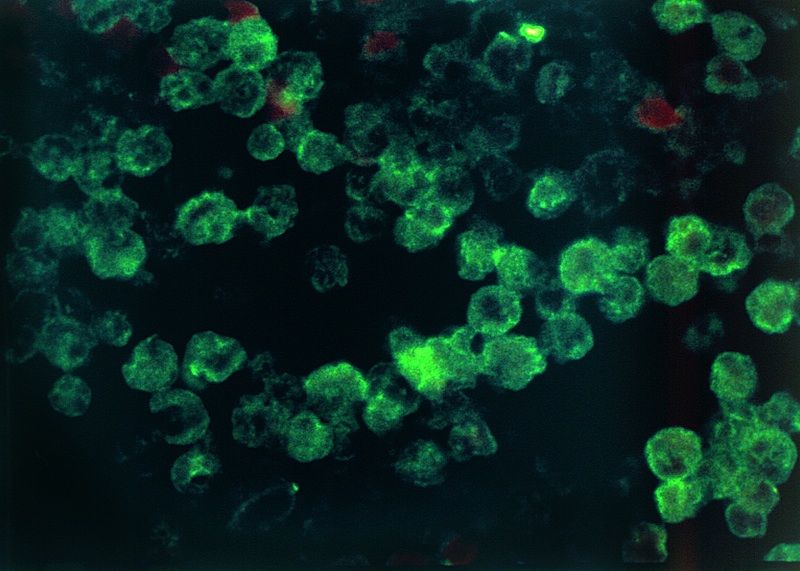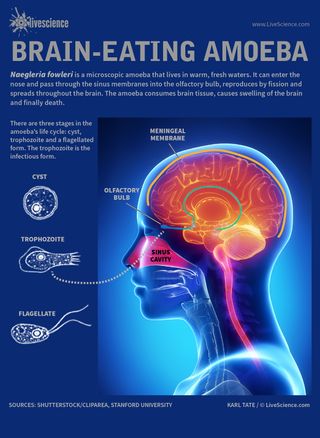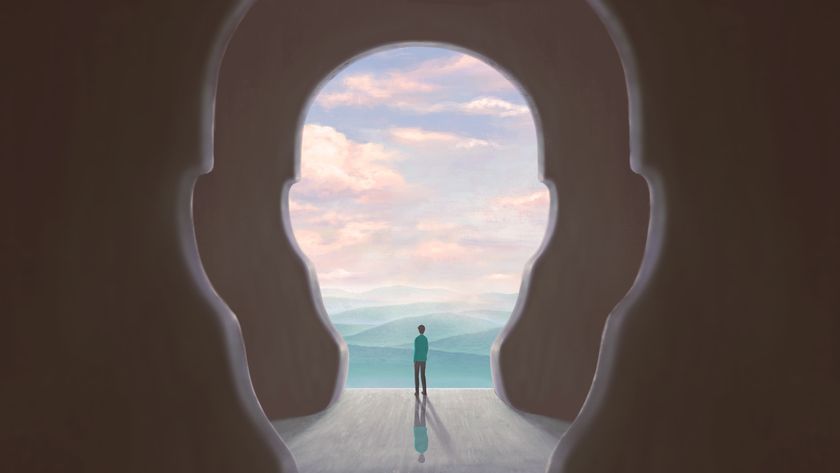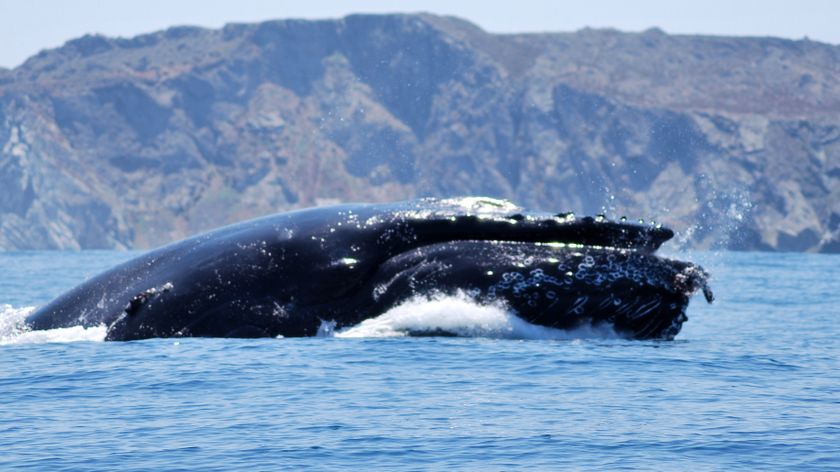Brain-Eating Amoeba: How One Girl Survived

The 12-year-old Kali Hardig of Arkansas is now the third survivor of the rare but nearly always fatal infection caused by the brain-eating parasite Naegleria fowleri.
Kali, who was admitted to Arkansas Children's Hospital on July 19 with a high fever and vomiting, had contracted the brain-eating amoeba while swimming at Willow Springs Water Park in south Little Rock, Ark., according to the Centers for Disease Control and Prevention (CDC).
Her condition is stable now and she is responsive, the doctors who treated her said. Early detection and experimental treatments may have contributed to her survival from a highly deadly disease that had put her in intensive unit care on a ventilator for weeks. [The 9 Oddest Medical Case Reports]
Brain-eating amoeba
N. fowleri lives in bodies of warm freshwater and invades the nervous system through the nose. After eating away the olfactory bulbs, the amoeba travels along nerve fibers to the floor of the cranium and into the brain. Once there, the organism starts eating brain cells.

"They naturally feed on bacteria," said Dr. Jennifer Cope, a researcher at the CDC.
But when the single-celled microbes find themselves in the brain where there's no bacteria to feast on, they turn to consuming brain tissue even though it's not their preferred food. [Infographic: Brain-Eating Amoeba’s Life Cycle]
Sign up for the Live Science daily newsletter now
Get the world’s most fascinating discoveries delivered straight to your inbox.
The result is a type of brain infection known as primary amebic meningoencephalitis (PAM) and nearly always death for the person infected.
Saving Kali
When Kali was diagnosed with the parasite, doctors put her on a cocktail of medications, such as antifungal drugs that had worked in two other survivors, in 1978 and in 2003. They also cooled down her body, a method sometimes used for cases of traumatic brain injury, hoping to minimize the damage occurring in the brain, said Dr. Mark Heulitt, one of Kali's doctors.
"Cooling worked pretty well with her," said Heulitt, a professor of pediatrics at the University of Arkansas for Medical Sciences.
The doctors also tried an experimental drug, which was initially developed for breast cancer, but had shown some amoeba-killing capabilities in the lab. The CDC provided the doctors with the drug, called miltefosine, through an emergency "Investigational New Drug" request, since the drug is still under investigation and is not approved yet by the FDA.
A few days later, tests showed no signs of the parasite in Kali's system; the amoebas seemed to have been killed and cleared away, Heulitt said.
Curing a deadly infection
While the experimental drug used in Kali’s treatment does suggest hope for finding a cure for the lethal infection, it isn't at all a sure thing. Miltefosine was used once three years ago in a boy who had contracted the parasite, but the boy didn't survive. [The 10 Most Diabolical and Disgusting Parasites]
"When the drug is tested in the lab against Naegleria Fowleri it does kill it. However, when you transfer the drug into the human infection scenario, a lot of factors come into play," Cope said.
"One of the toughest things is getting the drug through the brain barrier and into the brain," she said, referring to the blood-brain barrier, which helps to keep foreign substances from entering brain tissue.
Doctors aren't certain at this point what is responsible for Kali's survival, whether it is the drug, an early detection of her condition and prompt treatment, or a combination of factors.
"We don't know for sure. A lot of things might have gone right for Kali's case. One of the factors might have been this drug," Cope said.
"It's a rare infection; most doctors have never seen this infection. So there's a possibility that recognizing this infection earlier, starting treatment earlier and aggressively managing the increased intracranial pressure, contributed to a better outcome," Cope said.
Nearly 130 brain-eating amoeba cases have been reported in the United States since 1962, according to the CDC.
"Every case that happens we learn a little bit more, and certainly in case of a survivor we try to gather as much information as we can to try to learn why they might have survived and what could be done for future cases," Cope said.
The medications used in Kali's treatment and samples of the amoeba that infected her will be documented for further study, Cope said. Also, the investigators will look at the techniques used by her doctors to manage the elevated pressure in the brain, which is ultimately what most people die from, she said.
Kali can't talk yet, but she's able to write her name and respond to doctors and her family. She still has weeks of rehabilitation ahead.
Email Bahar Gholipour. Follow LiveScience @livescience, Facebook & Google+. Original article on LiveScience.

Most Popular




